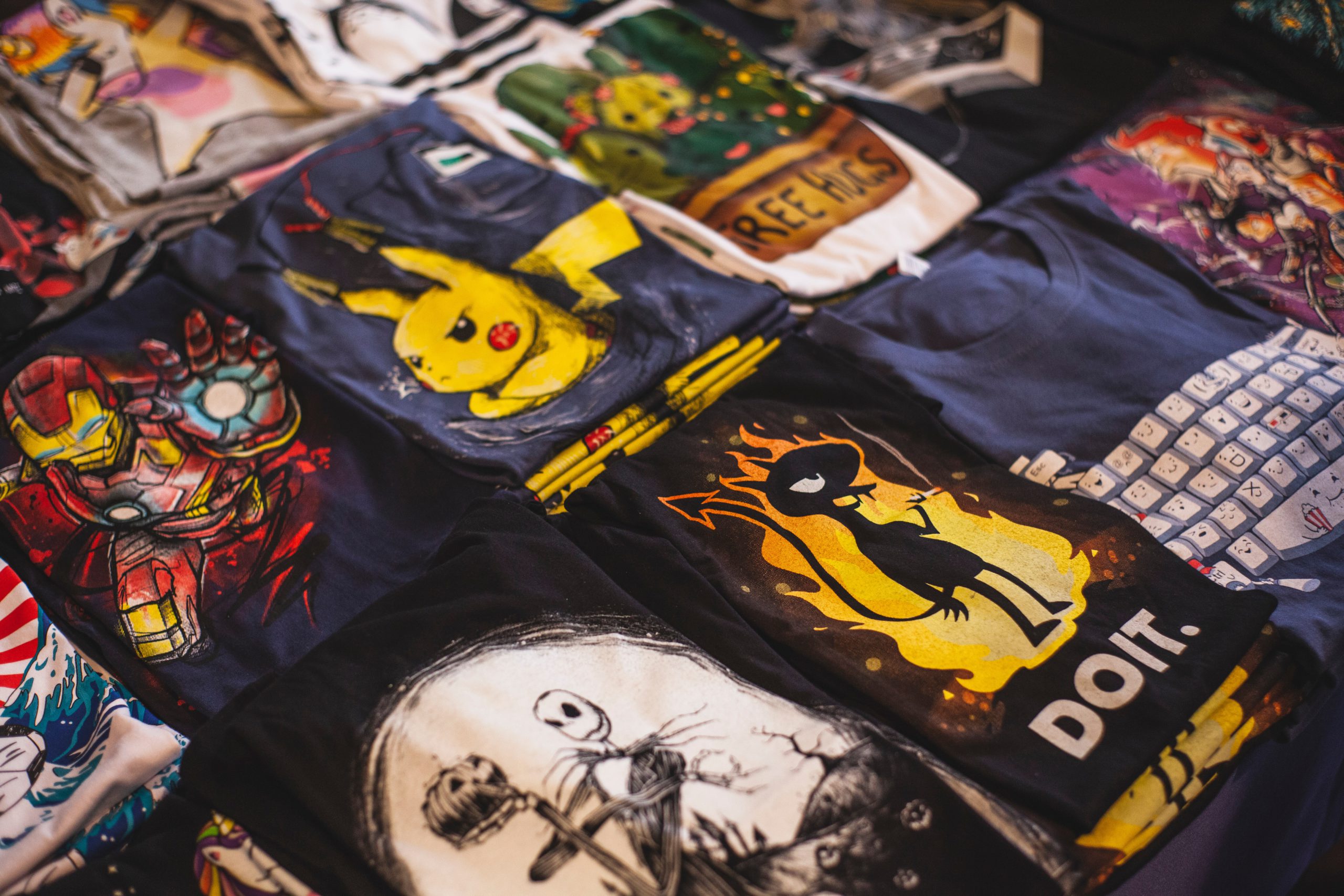
10 Types of Graphic Design You Should Know
Last update: 10 August 2023 at 10:07 am
When people talk about graphic design, they often use it as an umbrella term. It describes the visual elements of anything from business cards and signage to websites and advertisements. While it’s become an essential part of any brand awareness campaign or marketing strategy, there’s a lot more to graphic design than aesthetic appeal.
It’s about communicating ideas and information, solving problems, and evoking meaning or associations through the effective use of visual components such as:
- Imagery like illustrations, photographs, and symbols
- Tones, textures, and colours
- Shapes and forms
- Typography
Of course, there are countless ways to accomplish this. As such, a multitude of (sometimes overlapping) variations in graphic design lies beneath that umbrella. Each one requires a specialised skill set and certain design techniques.
With technology constantly evolving, graphic designers are always learning and adapting. Some focus on one area of design, while others prefer using their skills in a range of similar areas.
Whether you’re an enthusiast, professional, or business owner looking for a graphic design agency, knowing the different types of graphic design is crucial to making informed decisions. Here’s an in-depth breakdown to help you understand the numerous variants of this art discipline.
Marketing and Advertising Design

Marketing and advertising are about addressing consumer needs and wants. It’s also about engaging with people based on their awareness and satisfaction with products, services, and brands. M and D designers strategically create concepts in various print and digital mediums that tap into consumers’ purchasing decisions.
They’re responsible for visual content that aligns with a targeted demographic. For example, youngsters might respond better to a brightly coloured and lighthearted design as opposed to one with more muted and subtle tones.
Because visual content is more engaging, this one of the types of graphic design is crucial to help businesses promote their services or products effectively. These designers often work as part of an in-house team or as freelancers to collaborate with company owners, creative directors, and marketing professionals in advertising campaigns. Examples of this type of design include:
- Print and digital brochures
- Signage, billboards, and posters
- Flyers and menus
- Social media, magazine and newspaper ads
- Website images and infographics
Visual Identity or Corporate Design

Corporate design is about expressing the relationship between a brand and its audience. Visual elements like shapes, colour, and imagery evoke emotion and affect how a consumer perceives a brand. These aspects form part of a company’s corporate visual identity and communicate its personality, values, tone, and essence.
One of the primary objectives of corporate design is to render a brand instantly recognisable, so consistency across mediums is essential. These designers usually work with brand stakeholders using image libraries, typography, colour palettes, and logos to build a long-lasting visual identity. Some examples include:
- Corporate stationery
- Business cards
- Vehicle wraps
- Print and digital advertisements
- Social media content
Packaging Design

The majority of products you find online or on the shelves require packaging. However, this utilitarian element is also a valuable marketing tool. It can have a massive impact on how well a product performs. Why? Every bottle, box, and bag gives companies the opportunity to grab attention and communicate directly with consumers.
Packaging is also an essential aspect of rebranding. It can help companies get a leg up on the competition or fail dismally. That’s why these types of designers must have expert knowledge and understanding of print and industrial design and manufacturing. They’re typically tasked with developing concepts, mockups, and print assets for a product. Packaging design examples include:
- Product labels
- Corporate gift packaging
- Perishable item containers
- Product makeovers
- Shopping bags
User Interface Design

User Interface (UI) design is closely related to User Experience (UX) design. The former involves creating the visual and interface elements of a website, software program, or app, while the latter is about the more technical aspects.
As such, UI designers often work hand-in-hand with developers. They’re responsible for creating on-screen elements like buttons, controls, menus, and prompts, as well as the associated imagery, layout, and typography.
UI designers must anticipate how a user will experience the various visual components of a website or piece of software. Ultimately, their goal is to create an easy-to-use, cohesive yet striking interface by balancing functionality with aesthetic appeal. UI design includes:
- Game interfaces
- Website design and themes
- Software interfaces
- App design
- Online tool interfaces
Motion Graphic Design

While still a relatively new niche, motion graphic design is one of the most popular kinds. It encompasses visual and auditory media across a vast range of digital platforms, television, and film. Essentially, it centres around the aesthetic elements of motion or moving graphics such as imagery, audio, video, and typography.
Thanks to technological advancements, production times and costs have decreased, making motion graphic design more accessible and affordable. The art form provides new opportunities for organisations, business owners and individuals to incorporate more diverse mediums into their marketing and brand awareness strategies. Some primary examples include:
- Animated texts
- Digital presentations
- GIFs
- Title sequences
- Game motion graphic
Environmental Design

Environmental design is a multifaceted profession that combines graphic, interior, landscape, architectural and industrial design. The objective is to make spaces more engaging, memorable, informative and easy to navigate. It’s about connecting people to places using visual elements to improve their overall experience.
These designers usually have knowledge of industrial design concepts, with experience and education in architecture and graphic design. They typically collaborate with professionals in several fields to plan and execute designs.
Organisations use environmental design to communicate meaningful messages that help create a certain atmosphere for space. They also use it for more practical purposes like wayfinding, which includes signage and visual cues. Other examples include:
- Conference and event spaces
- Exhibitions
- Wall murals
- Office space design
- Franchise shop branding
Information Design

As a practice, information design aims to simplify, condense and present data that makes it easy for people to understand and access. It’s utilitarian in nature and spans numerous mediums and design types. It’s more about the way an audience or user experiences such information and less about aesthetic appeal. That said, visual elements still play a crucial role here.
From restaurant menus and instruction manuals to street signs and website pages, information designers are concerned with portraying useful data efficiently. They typically work with technical writers, editors, data experts and creative directors depending on the design medium. Here are a few examples of information design:
- Airport signs
- Wayfinding visuals
- Brochures and manuals
- Infographics
- Food menus
Publication Design

Publications are long-form pieces of content that communicate with an audience via public distribution. Therefore, publication design often refers to traditional print media such as books, catalogues, magazines, and newspapers. However, in today’s ever-evolving technological era, ebooks, emagazines, digital brochures, email newsletters, and virtual manuals all fall under this category.
Professionals in this niche use traditional graphic design elements like colours, tones, imagery, and typography. They combine these aspects to create visual content that people can perceive cohesively with the theme of the written content. As such, they typically work at publishing houses or creative agencies. Some examples of this design type include:
- Annual reports
- Directories
- Product catalogues
- Novels and non-fiction books
- Magazines and newspapers
Illustration and Art for Graphic Design

Graphic illustration and art are often called graphic design, with many using these terms interchangeably. However, they’re actually very different from one another. Graphic designers create visual interpretations of a concept to communicate messages and solve problems.
On the other hand, graphic art and illustrations consist of original works in various forms, from fine art and book illustrations to game characters and other visual content. Technically, they aren’t types of graphic design. However, they’re often used in a commercial context to the point where one isn’t without the others. Primary examples include:
- Album covers
- T-shirt designs
- Technical illustrations
- Stock images
- Concept art
Human-Centred Design

While also not technically one of the types of graphic design, human-centered design (HCD), also referred to as design thinking, is a philosophy that applies to all types of mediums. It revolves around human users’ wants and needs during the creative process.
We’ve already mentioned that graphic design is about solving problems. However, HCD takes it up a notch. It seeks to identify unique problems, focusing on the human perspective to find effective design solutions.
HCD professionals typically engage with people on the ground to better understand a particular problem. They then use the information to determine how their skills can help alleviate that pain point. Some examples include:
- Packagings such as ring-pull tabs, squeeze bottles, and resealables
- Devices like simplified remote controls
- Practical design elements like push and pull door handles
- Simple, easy-to-use applications or programs
- Practical items like kids toothbrushes
A Final Word
Graphic design, while it encompasses visual elements, is also about solving problems, establishing connections, and communicating ideas. From marketing and packaging to UI, publication, and more, design is essential to an organisation’s brand identity, products, and services. If you are looking to reogranise your company with one of these types of graphic design, don’t hesitate to look into our graphic design agencies to help you out.





